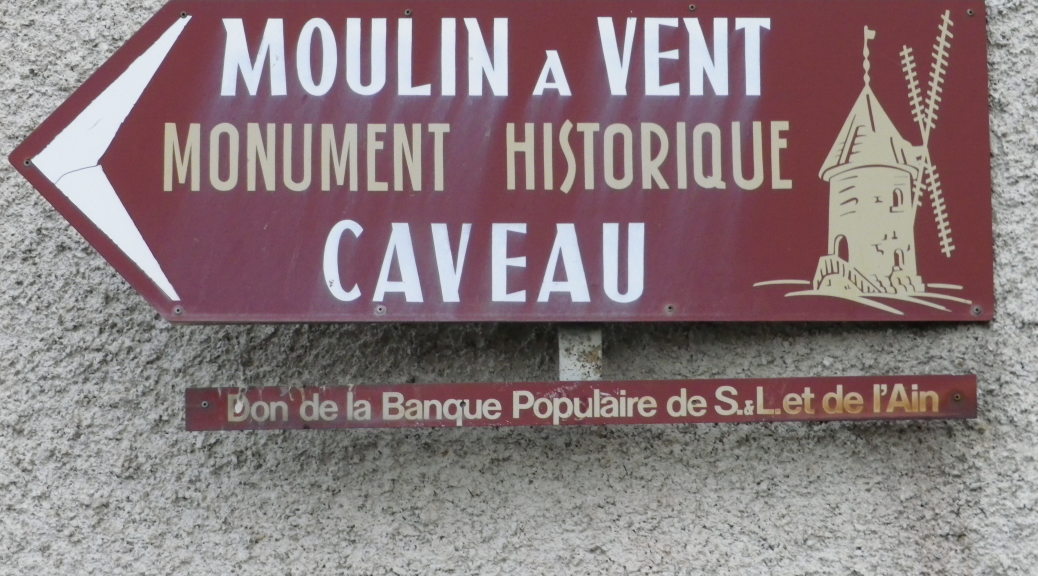What I Learned:
Beaujolais is a wine region just south of Burgundy. It has three different quality levels: a simple Beaujolais produced in the southern-most reaches of this region; a Beaujolais-Village appellation; and in the northern part of this wine region, ten villages have their own appellations due to their special crus. It is a singular geological area, once part of an ancient sea bed. The hills are often steep and hide valleys between them. Schist and granite soils in the Beaujolais give a distinctive minerality to the wines. The best of these wines, the ten villages/areas of appellation (Brouilly, Chenas, Cote de Brouilly, Chiroubles, Fleurie, Julienas, Morgon, Moulin a Vent, Regnie, Saint-Amour) offer good value for quality wines.
The Beaujolais wine region’s viticultural and vinicultural practices present some unique aspects to wine enthusiasts.
What you see here is quite different from most other viticultural areas in France. First is the grape: Gamay, an ancient offshoot of pinot noir. It is fairly hardy, and yet can produce wines of decent depth and character. (But for all that, it was not much loved by the Duke of Burgundy, who prohibited its cultivation in duchy vineyards in 1395.) The foremost aspect to notice is the method of training and pruning the grapevines. The method is called gobelet, and with its four upturned arms, the vines in winter can appear like a goblet. In flower, these can look like short, grape-bearing shrubs.
Other unique traits involve three aspects of wine-making in this region. Often vintners allow the grapes to ferment in vats on the stems, and without the aid of crushing mechanisms. Vintners here often promote carbonic maceration through the use of closed tanks (with little oxygen, more carbon dioxide) to make their wines. Finally, there is the famous early bottling for many, but certainly not all, Beaujolais wines. The release of Beaujolais Nouveau just a couple of months after harvest is cause for celebration not only in the Beaujolais, but also throughout the world by Beaujolais fans.
What I Tasted:
2013, Gamay, Chenas, AC; Coeur de Granit, Cave du Chateau de Chenas; a dry red wine with dark red color; a slight floral scent, minerality comes through, very mild tannins and low acidity.
2013, Gamay, Morgon AC, Les Charmes, Didier Desvignes: a dry red wine with dark purple-red color; scent of blackberry, slight floral notes; a bit tannic, somewhat acidic and racy.
2012, Gamay, Saint Amour, AC, Georges Deboeuf; an off-dry red wine with a very dark red color; floral scent, floral notes with a hint of blackberry on the finish; low acidity, and no discernible tannins, very smooth and well-balanced overall.
2011, Gamay, Moulin a Vent, Cuvee Vieilles Vignes, (Thesaurus Collection); Cave du Chateau de Chenas; a smooth dry red wine with purple hue; slight smoky and floral notes; mild tannins, mild minerality, and medium-low acidity.
2011, Gamay, Chenas, Cuvee Tradition, Domaine des Brureaux: a dry red wine with purple-red color; floral scent, notes of smoke and blackberry.
2011, Gamay, Fleurie, AC, Georges Deboeuf; a dry red wine with deep, dark purple-red color; a scent of smoke and blackberry, and a hint of hazelnut; smooth with very light tannins.
2011, Gamay, Julienas, AC, Chateau des Capitans: an off-dry, red wine with dark purple-red color; floral notes, mild acidity, and virtually no tannic taste.
2010, Gamay, Saint Amour, AC, Domaine Porte du Paradis – Selection Georges Blanc: an off-dry, red wine with deep red color; a floral scent, with blackberry and floral notes; low acidity with a smooth finish.
